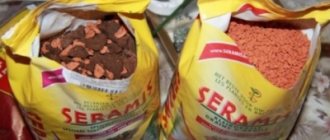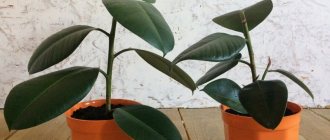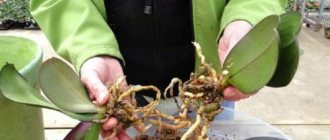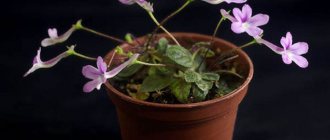A beautiful plant called azalea requires responsibility when growing: it is whimsical and loves attention to itself. But the spectacular flowering of its bushes gives a great boost of good mood. Many who decide to have this flower at home are interested in how to propagate azaleas.
At home, this can be done in several ways: dividing the bush, cuttings, sowing seeds, grafting. The process is quite labor-intensive and includes a number of rules and subsequent care. It is advisable to study the theory and take into account possible errors.
Azalea propagated by cuttings
Features of cuttings in different types of rhododendron
- In deciduous varieties, a young shoot with light-colored, partial-size leaves should be selected for rooting; the stem should bend easily, but not break. The bud at the top will be in the ripening stage. This is the growth of the last year, and it needs to be separated.
- In evergreen varieties, woody shoots are used. The leaves of the future plant should be dark-colored, of normal size, as on the mother bush, in an amount of at least five pieces.
How to determine that the shoot is ready for separation?
- Deciduous rhododendron cuttings are ready to be taken as long as they are soft in the stem and do not break.
- Evergreen varieties of rhododendron show readiness for cuttings with a dry crease of the stem. At the same time, the characteristic crunch of breaking wood is heard.
The cutting is always taken from an adult healthy plant without signs of visible external damage. Azaleas are pruned into cuttings once a year so that the mother plant has the strength to further ripen buds and flower.
Mature azalea bushes need pruning to form a beautiful and even crown, so even if it is not propagated, this is part of basic care.
What soil to choose for rooting?
Here are several options for selecting soil, the main thing to remember is that only soil with a light, loose structure is suitable for rhododendrons:
- Peat is often used. If you take it from swamps, then only the very top layer, since its acidity is less.
- You can prepare a mixture of coniferous soil, peat and sand (proportion 2:1:1). For better moisture retention and loosening of the soil, Vermiculite is added.
- It is easier for beginners to buy ready-made soil for growing azaleas. It has already thought out the necessary composition and added the necessary nutrients.
- Rooted shoots are transplanted into soil similar in composition to that which was in the early stages of germination.
Which pot should I put it in?
Since not all rhododendron shoots can be rooted well even with careful care, experienced gardeners grow five or more young plants at a time .
In this case, a greenhouse is built. For this purpose, take a box or box and, after planting the cuttings, cover the container with film or a light-transmitting cap to maintain a comfortable temperature for the young animals of 22-25 degrees. The plants are planted at a distance of 4 cm from each other. If you manage to obtain single cuttings for planting, you can use small pots with a diameter of 5-7 cm, which will need to be covered with a transparent bag or a cut plastic bottle.
Periodically, the container with seedlings needs to be ventilated to prevent the shoots from rotting. It is also necessary to turn it towards the sunlight with the opposite side for uniform illumination.
The cuttings rooted in the box are planted in separate pots, not earlier than they have begun to grow well. The size of the individual bowl should be slightly larger than the root ball with soil. As it grows, you can transfer it to a larger pot.
Azalea is not an easy plant to propagate and requires a lot of effort and attention , so you should approach every step of cuttings responsibly!
Growing from seeds: what is good about this method
Growing azaleas from seeds is an equally labor-intensive process. The method has an advantage over all others in that it is possible to obtain any desired number of copies from scratch at the same time, which is good for production scales. If the seed has sprouted, seedlings will appear within two weeks. The main condition is fresh, high-quality seeds and suitable growing conditions.
This method also has its own nuances. For example, three seasons must pass before the plant is planted in open ground.
How to choose the best seeds
You need to buy azalea seeds in trusted stores that have quality certificates for all commercially available products. The packaging must not have defects, tears, or dents.
The packaging must indicate the following parameters:
- number of seeds;
- best before date;
- manufacturer.
Important! If the seeds are stored in a cool, dry place, they are suitable for use for up to three years. The easiest way to propagate azaleas is from fresh seeds, which can last up to 90 days.
You can collect the seeds yourself. To do this, you need to wait until the end of the flowering period and open the five-leaf box. The seeds are small and elongated, each from 0.5 to 2 mm in length.
The time for collecting material is the end of autumn. The seeds should ripen well, become dark brown in color, while the box remains green. After collection, they are wrapped in paper or cardboard for several days until completely dry.
What should the soil be like for planting seeds?
Seeds are sown in soil with a top nutrient layer or laid out on peat tablets. Sowing period is March-April. You can start propagating azaleas in February, then additional lighting will be required to create a daylight period of 12 hours.
This is interesting: Turf: planting and care in open ground, types of shrubs with photos and descriptions
How to grow a lush azalea from seeds? Mandatory conditions for seed germination are sun and moisture. If a greenhouse effect has been created over the growing vessel, then the glass or film is periodically removed for ventilation. In order not to over-moisten the seeds, it is better to irrigate the soil from a sprayer using a special composition: dilute 4 g of oxalic acid in 10 liters of settled water.
Any available container is used for sowing. The bottom of the flowerpot is equipped with drainage holes.
Stores sell ready-made soil mixture for rhododendrons. You can make it yourself from the following components:
- deciduous soil;
- turf land;
- peat;
- sand;
- humus.
All components are taken in equal proportions and pre-disinfected in a solution of potassium permanganate, you can add baking powder.
The most important parameters for the soil:
- water permeability;
- air permeability;
- rich in minerals;
- ease;
- looseness;
- acidity pH 4-4.5.
Important! The soil should be warm before sowing.
Temperature
Standard home conditions are suitable for growing seeds: air temperature 20 °C and bright light. In this situation, the seeds will sprout in 2-4 weeks, the sprouts will appear unevenly. To stimulate growth, it is recommended to spray them with a solution of zircon or epin.
Illumination of plants with a phytolamp
Humidity
The sprouts must be kept in high humidity conditions, so they are covered with transparent material to create a greenhouse effect.
For your information! The hardest thing is to adapt sprouts to new conditions, dry, cool air. To harden azaleas, they are taken into a room with a temperature of 10 °C. This will boost the flower’s immunity and subsequently protect against many diseases.
To avoid flooding the seeds, you can use the bottom watering method. In this way, the sprouts receive the necessary nutrition and the root system is stimulated.
Step-by-step instructions: how to take cuttings at home?
Let's look step by step at how to grow rhododendron from cuttings at home and what needs to be done to propagate it.
How to separate correctly?
- Cut a cutting 10-15 cm long with a sharp, clean knife.
- Remove the three lower leaves, leaving 0.5 cm from the cutting itself. Cut the remaining leaves in half.
- On the side of the cutting, starting from the bottom, remove the bark upwards, 2 cm long. It is important not to damage the bast. This is where the roots will eventually appear.
- Before planting, treatment with a growth stimulator is necessary. The shoot should stand in the liquid solution for several hours, or better yet, overnight. When using dry, the cuttings are sprinkled with a powder mixture.
Plant (including in water)
- Spray the soil for planting with a weak solution of potassium permanganate.
- The cutting is placed in the ground to a depth of 2.5-3 cm, slightly inclined. Then compact the soil with your finger around the stem.
- The box with plantings is covered with film or a transparent cap so that the cover does not touch the plants.
Rooting in water significantly reduces the cuttings' chances of survival, because... The process of root formation itself is very long - from 3 months. It is permissible to keep the sprouts only for a few days in water with the addition of a growth stimulator. The top of the container can be covered with the cut off top of a plastic bottle to create an increased temperature.
The summer-autumn period is best suited for rooting . Sometimes winter shoots are germinated, but this is associated with a number of difficulties.
When can I expect results?
If the flower was planted 3 or 4 months ago and all planting conditions are met, then you can notice the first changes. As soon as the growth reaches 3 cm, you can remove the film from the greenhouse and plant the cuttings in separate pots, adding expanded clay to the bottom.
Do not suddenly abandon film cover. It is better to start accustoming a young azalea to changes in external conditions from one and a half hours a day, gradually increasing the time period by one hour a day.
Azalea propagation
Azaleas are propagated at home, as a rule, in the following ways:
- seed;
- vegetative;
- through vaccinations;
- dividing bushes.
- cuttings (more information about how azaleas are propagated by cuttings at home can be found here).
For the latter method, a predominantly adult individual with a large number of shoots is used.
I would like to dwell on the not most common method of propagation - seed.
Experienced flower growers rarely use this method, due to its labor intensity and low effectiveness.
The main feature is the creation of the right growing conditions:
- the need to create a greenhouse effect;
- the presence of a special soil mixture;
- maintaining high humidity;
- constant lighting (from March to August, natural sunlight is sufficient; at other times, artificial lighting is required).
Difficulties and problems
Often, difficulties in growing azaleas discourage inexperienced gardeners from taking cuttings of this flower again. It happens that plants die for no apparent reason in the first weeks, and sometimes they simply do not grow after the allotted time. Therefore, it is important to take into account not only the stages of planting the cutting itself, but also the following points:
- take seriously the choice of shoots, processing of tools and soil;
- assess the maturity of the plant from which the cutting is taken and make sure that its flowering period is over;
- take into account the possibility of organizing the desired temperature regime and heating the box from below if necessary;
- avoid drafts;
- for cuttings in winter, prepare additional lighting;
- constantly maintain air humidity in the greenhouse by regular spraying;
- do not allow the soil to become waterlogged when watering or dry out;
- inspect the plant for pests.
First care for a planted houseplant
Having grown cuttings, you should not relax too much, because... the plant is still weak and requires increased care :
- It is important to regularly feed and fertilize. Remember that the bush must grow actively in the first year, otherwise it will die.
- Do not place a young plant in direct sunlight. During the winter months, it is necessary to connect additional lighting to extend daylight hours.
- Drafts and sudden temperature changes during the day and night should be avoided.
- For irrigation, you can only use settled water at room temperature. You can use rainwater or melt water.
Once a week, citric acid should be added to the water for watering azaleas (1 gram per half liter of water). The same water can be sprayed on the plant.
If a newly rooted plant soon produces buds, it is better to remove them to allow the young flower to grow stronger.
Now, knowing all the intricacies of growing azaleas, you can evaluate your strengths and capabilities. Someone will decide to practice on less demanding plants. More persistent gardeners, having created comfortable conditions for root formation and further growth and having patience, can hope that the azalea will thank for their efforts with vigorous flowering.
In any case, you should remember that a flower is like a child, the more you invest in it, the greater the likelihood of success. Cuttings are the easiest way to propagate a plant. If your attempt fails, do not despair, because next season the growing experiment can be repeated after analyzing all the errors and shortcomings.
Reproduction
It is possible to propagate azaleas from spring to August using some methods: cuttings, seeds and dividing the bush. This is labor-intensive work that requires more perseverance from the gardener.
Propagation by seeds
This is a simpler method - seed propagation of Azaleas. Of course, it is rarely possible to obtain azalea seeds at home after flowering.
The seedlings of the flower are very small; they are sown on top of the ground, or even in sponges, where it is possible to trace the position of the small seed, in cotton swabs placed in a nutrient medium, or in specialized peat tablets.
You will notice for yourself whether the seeds have sprouted. Azaleas germinate from seeds within 10 days. Then the flowers unfurl their original leaves and delight our eyes.
If everything went well, carefully plant the tiny azaleas, along with the base in which they grew, into the ground. Protect seeds and rudiments from very strong clear light - it is harmful to them.
How many emotions awaits you to experience before the flower you grow from a small seed takes a suitable place in the room, how many pitfalls this skill will present to you.
It is possible to grow Azaleas only from seeds, which are no more than 3 months old. As a rule, their germination rate is almost one hundred percent.
Important! If the seeds are old, attempts will not bring success; this should be taken into account when carrying out the procedure.
Propagation by apical cuttings
If Azalea grows at home, then propagation by cuttings in this case will be very advisable. But it is important to note that in the case of Azalea, such propagation will be a little difficult.
Reproduction by air layering
In order for Azalea to reproduce at home, it is worth resorting to the use of special layering. For this, in the spring, those shoots that are present in the lower tiers are bent to the soil itself. Using a sharp knife, make a small incision. A toothpick or an ordinary match is then placed into this cut. Next, using a special wire, everything is attached to the substrate, which was prepared in advance.











